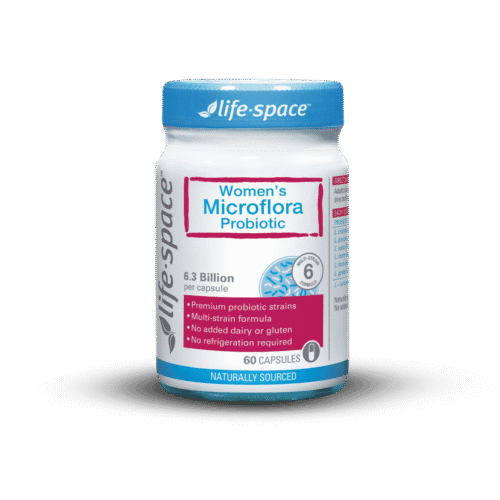Douching is the process of rinsing out your vagina with a liquid. Commonly used vaginal douching liquids include diluted vinegar, hydrogen peroxide or water, used at low pressure.
A douche can be performed using a device such as a syringe without a needle, turkey baster or purpose-made silicone douching device.
Is vaginal douching safe?
Douching has a mottled reputation. It is considered an unhealthy practice because it washes away your protective vaginal flora, can damage cells, and can introduce pathogens.
A lack of protective vaginal bacteria can leave the vagina wide open to bacterial imbalances and infections such as bacterial vaginosis (BV), aerobic vaginitis (AV) or yeast infections.
But, if you have an unpleasant odour or discharge, a diagnosis of BV, AV or a yeast infection, douching to manage symptoms or treat the condition can be a therapeutic treatment and not damaging, but helpful.
Importantly, if the vagina doesn’t have much or any protective bacteria to speak of, the act of douching with a therapeutic substance, or even water, may help manage symptoms.
The take-home here is that regular douching in the absence of symptoms is not safe and is not recommended. However, using limited, therapeutic vaginal douches with specific substances for a set timeframe, particularly under practitioner guidance, can be an effective treatment delivery system.
I have symptoms – should I douche?
If you have vaginal symptoms such as odour or unusual discharge, it’s very important to see your healthcare provider and get a test. You can also get an at-home comprehensive vaginal microbiome test, with free support from the testing provider and My Vagina.
There are a few options for seeing what’s floating around your vagina, which can be helpful in determining what might be going wrong if there are issues. If your vaginal microbiome looks great, you can avoid douching because everything is in order.
- A comprehensive vaginal microbiome test (no doctor required) which shows all bacteria and fungi/yeast
- A wet mount at the doctor’s office, where your doctor looks at your vaginal fluids under a microscope
- A PCR panel requested through your doctor which looks for a limited number of microbes
It can be useful to do regular at-home pH testing of vaginal fluids even if you have a healthy vagina, so you can see what’s normal for you, if something is off, or if treatments are or are not working. If you are menopausal, pH testing may not be as useful as vaginal flora changes in this stage of your life.
- How to test your vaginal pH at home
- Buy vaginal pH strips
- Order an at-home comprehensive vaginal microbiome test
To douche or not to douche?
The golden rule of douching is that if it ain’t broke, don’t douche. If your vagina smells, has unusual discharge or other symptoms, the first step is to see your doctor to get a diagnosis.
Science proves it! Douching is associated with negative outcomes
In many studies1–4 douching is consistently correlated with higher rates of vaginal infections, including BV. While the connection between BV and douching is real, it isn’t always obvious whether douching causes BV or is performed as a result of BV, or other factors (such as cultural practices).
It’s likely that both can be true since BV can come with some pretty unpleasant symptoms that anyone would want to wash away.
Rinsing out your vagina can seem like – and actually be – a good symptom-management tool in the face of multiple failed treatments and no light at the end of the tunnel, but it is not healthy in the long term.
If you have BV or another unpleasant microbial imbalance, successful treatment is key, though many people suffer chronic bacterial imbalances. Once you have treated your issues and your vagina is healthy, douching is not recommended under any circumstances.
In the meantime, you may not be doing any further harm to your non-existent or heavily overrun vaginal flora by douching with the right ingredients.
Options for therapeutic vaginal irrigations
Diluted vinegar, warm strong green tea, hydrogen peroxide, water with heavily diluted essential oils like tea tree, or other non-medicated rinses are all acceptable douching liquids if you are struggling with unpleasant vaginal symptoms. Check out our solutions for unpleasant vaginal odours for more suggestions.
Feel free to do what you must to stay sane while you continue your search for a treatment that works for you. If you’re not sure, book in with us for specialist support.
Don’t douche a healthy, happy vagina!
If you have a healthy vagina that isn’t showing any signs of issues, do not douche. There is no need.
Douching can be great in very specific circumstances and damaging other times. Know the difference and be very cautious about douching!
References
- 1.Yıldırım R, Vural G, Koçoğlu E. Effect of vaginal douching on vaginal flora and genital infection. J Turkish German Gynecol Assoc. Published online February 28, 2019:0-0. doi:10.4274/jtgga.galenos.2019.2018.0133
- 2.Martino JL. Vaginal Douching: Evidence for Risks or Benefits to Women’s Health. Epidemiologic Reviews. Published online December 1, 2002:109-124. doi:10.1093/epirev/mxf004
- 3.Brotman RM, Klebanoff MA, Nansel TR, et al. A Longitudinal Study of Vaginal Douching and Bacterial Vaginosis–A Marginal Structural Modeling Analysis. American Journal of Epidemiology. Published online May 15, 2008:188-196. doi:10.1093/aje/kwn103
- 4.Hesham H, Mitchell AJ, Bergerat A, Hung K, Mitchell CM. Impact of vaginal douching products on vaginal Lactobacillus, Escherichia coli and epithelial immune responses. Sci Rep. Published online November 29, 2021. doi:10.1038/s41598-021-02426-5

Get a fresh perspective with a qualified, experienced vulvovaginal specialist naturopath.
This product has multiple variants. The options may be chosen on the product page
The most comprehensive vaginal microbiome test you can take at home, brought to you by world-leading vaginal microbiome scientists at Juno Bio.

Promote and support a protective vaginal microbiome with tailored probiotic species.






